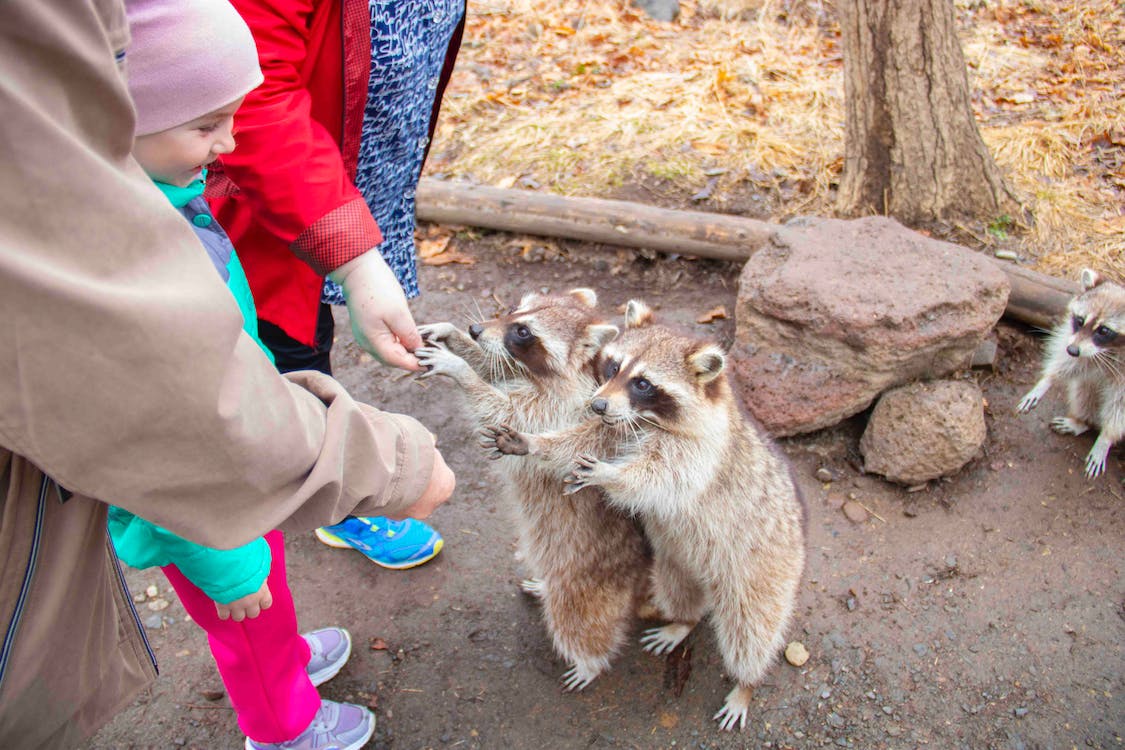Revenge of the Parasites
If You See a Raccoon, Assume It's Infected

There is a hidden and potentially dangerous creature lurking in our community right now. It lives in the intestinal tract of the friendly neighborhood trash panda, aka the raccoon. A shocking 80-90 percent of Isla Vista raccoons providea home to Baylisascaris procyonis, or the raccoon roundworm.
It’s no secret that I.V. has a vast population of raccoons. Their presence is so common that the raccoon has become a symbol of UCSB and IV culture (check out manziraccoons). Because raccoons are meant to be the final host to this roundworm, the parasite is harmless to them. However, if accidentally ingested by the wrong host, Baylisascaris can cause serious illness and even death.
The CDC provides a non-exhaustive list of inconspicuous symptoms caused by raccoon roundworm infections, such as nausea, tiredness, and lack of attention.
However, in severe neurological cases, symptoms can be devastating. For example, in 2015 an infected 3-year-old boy in California suffered from lifelong neurological consequences, including paralysis, loss of bladder control, and difficulty swallowing — all of which doctors suspected were parasite-associated symptoms. Although there was no known direct contact with raccoon feces, the child lived in a neighborhood where raccoons were common.
Baylisascaris is an unfamiliar parasite with fewer than 25 documented cases in the United States. I learned about this parasite during my junior year when I took a parasitology course at UCSB. Although it seems like Baylisascaris is rare, these numbers are likely huge under-representations of actual infections due to misdiagnosed cases or diagnosis of primarily severe cases.
Anyone is susceptible to infection, but children are at greatest risk since they are more inclined to put their hands in their mouths. In 2002, the Daily Nexus reported that an 11-month-old boy was hospitalized for two weeks at Goleta Valley Cottage Hospital after contracting this parasite from a UCSB-run daycare. Out of approximately 25 reported cases, what are the chances that one of those was right here in I.V.? As a health-care worker, I frequently encounter children in our local emergency departments presenting with non-specific symptoms that often overlap with those of this disease.
What if science gets it wrong sometimes? What if some children are actually presenting with early manifestations of raccoon roundworm and we are overlooking it?
In 2014, UCSB researchers assembled a team of scientists to investigate how common Baylisascaris infections might be in humans from Santa Barbara County. Using specialized blood tests to detect past or current infections, they found that out of 150 volunteers, 11 tested positive. All of the volunteers presented with no symptoms, and nine of the 11 reported no contact with raccoons or their feces. The researchers concluded that infections do occur in Santa Barbara, but at a subclinical level that is undetectable by the usual clinical tests.
Raccoon latrines, or communal defecation sites, are the primary sites of infection. Numerous sites can be found around I.V., such as on decks, lawns, and near trees. Accidentally touching contaminated surfaces near these latrines could allow for infection without ever contacting a raccoon. One California based study found that 28-49 percent of homes surveyed in Carmel, Pacific Grove, and San Jose — cities with large populations of raccoons — contained at least one raccoon latrine positive for raccoon roundworm eggs.
Rather than eradicating raccoons, the best way to manage this disease would be through long-term treatment. One study demonstrated that monthly distribution of anti-parasitic baits effectively decreased or eliminated parasite load in wild raccoons, thus mitigating raccoon-borne diseases. Achieving a safer community will take time, but if we bring this issue to the attention of local authorities, long-term protection against raccoon roundworms looks promising.
Research on the raccoon roundworm has been scarce in the past couple of years. Even the CDC has been lacking, with their last update on this parasite being in 2018. In order to prevent potentially life-threatening cases, we should urge the scientific community to reignite new medical research, monitor the problem until we find a solution, and educate ourselves to become familiar with this parasite.
For some time, the raccoon population in I.V. has decreased due to drought conditions. However, Santa Barbara County received a substantial amount of rainfall this year. From floods to spring blooms, what else can unprecedented rain bring us? I believe that this sizable amount of rain will indirectly benefit the raccoon population in I.V., and thus their intestinal parasitic residents — making it crucial to monitor this disease now more than ever.
There are plenty of ways for us to protect ourselves today. Whether you are a student or a parent living in I.V., we can begin by spreading awareness and remaining alert of our surroundings from now on. We can even urge the scientific community to implement routine screening protocols at daycares and schools. Some practices that we can implement into our daily routines include: refraining from feeding raccoons, frequent handwashing, and removing any raccoon latrines near our homes. For more information on how to stay safe, visit this CDC page.
Juliana Herrera is an undergrad at UC Santa Barbara, an emergency department scribe for Cottage Hospital, a pulmonary medical lab assistant, and an Isla Vista resident.



